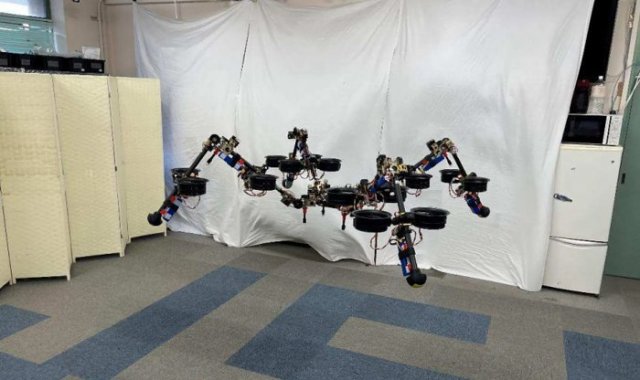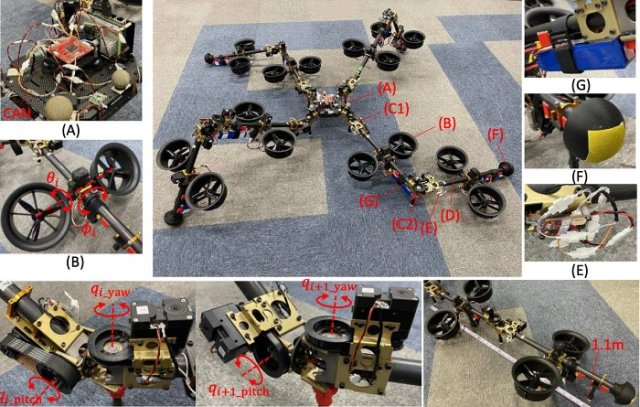
Drone Multi-segment transformer drones are certainly a new stage in the evolution of robotics.
Engineers at the University of Tokyo have created a flying drone consisting of several segments, each of which is equipped with its own power plant.
Drone engines can change the thrust vector in any direction using multi-axis gimbal systems. The team learned how to control this complex mechanism and coordinate its flight in any direction in real time.

Multi - segment drone In the presented video, you can observe the work of the flying robot "DRAGON".
At first glance, his movements are somewhat clumsy, slow — this is due to the complexity of control. Nevertheless, the drone successfully moves objects, curls up into a ring, grabbing various objects weighing up to 1 kg, manipulates them and lowers them to the floor. And all this in flight. Work on the "flying dragon" has been going on for several years. According to the creators of the drone, it has enormous potential, which will certainly be revealed with the advent of new software.
Equally interesting is the concept of the robot "SPIDAR", equipped with four legs with articulated "joints". To make it easier for him to move, roboticists have minimized the number of engines used on each segment. As a result, it turned out to be a rather impressive structure weighing 15 kg, resembling a spider that can fly and move on the floor — even if it is still not very confident. It is obvious that "DRAGON" and "SPIDAR" are just prototypes of future flying robots capable of performing several operations with various objects at the same time. In the foreseeable future, they will not only be able to fly, but also be fixed on walls and ceilings.
Alexander Ageev
